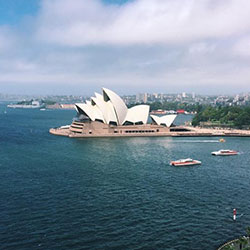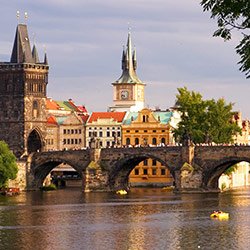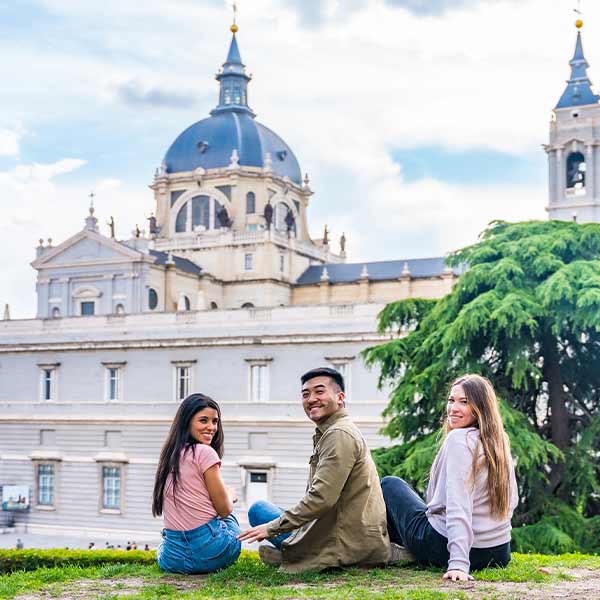The Unexpected Ways Studying Abroad Shaped My Future in Engineering & Travel
Bringing Study Abroad to More Engineers
My study abroad experience had such a profound impact on me that I wanted to help other engineering students do the same.
After coming back to UMass, I became a CEA CAPA Alumni Ambassador for two years, sharing my story with other students and helping them see that studying abroad was actually doable, even with a jam-packed engineering schedule or a demanding major. This was a rewarding experience where I got to chat with other students and write a few articles for CEA CAPA.
I also worked as an Engineering Study Abroad Coordinator at UMass, where I co-created a program called Engineering Essentials for Study Abroad. The goal was simple: break down the myth that engineers “can’t” go abroad. Spoiler: We absolutely can.
Through this initiative, we helped students fit study abroad into their course loads without delaying graduation (and in the right price range of course). We worked with faculty and international programs to make it easier for engineering students to find the right courses abroad.
The program was a success, and to this day, I’m proud to have played a role in making study abroad more accessible for engineers. It was one of the most fulfilling things I did during college—knowing that I was enabling others to have the same experience with CEA CAPA that I did.
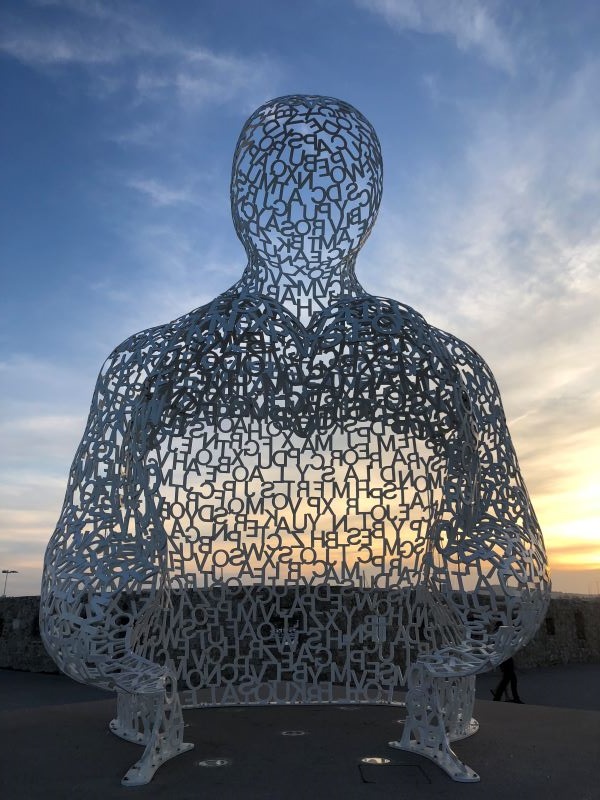
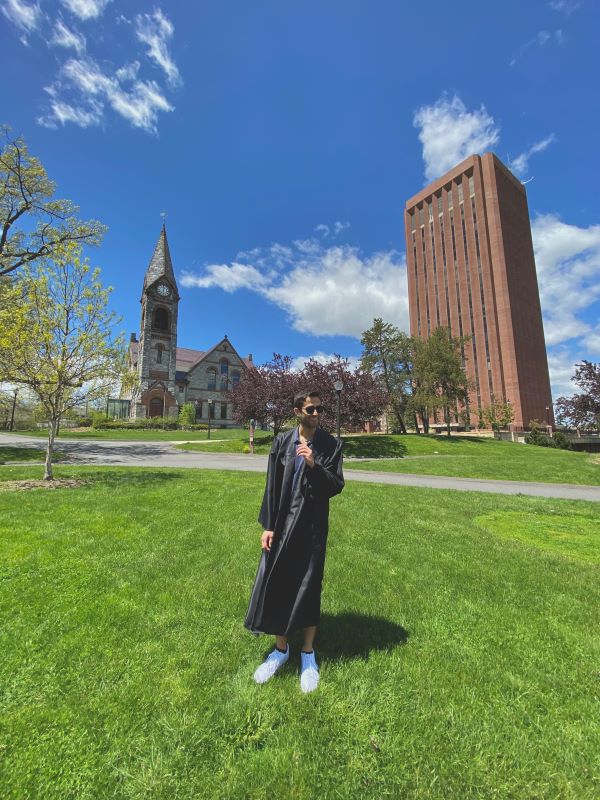
Graduating from UMass Amherst
Engineers Without Borders & My Path to Environmental Engineering
My international experiences didn’t stop after Antibes. At UMass, I became Vice President of Engineers Without Borders, which focuses on sustainable development projects around the globe. Our chapter focused on assisting two communities, one in Kenya and one in Ghana.
Our efforts culminated in a trip to Kenya, where we helped install water infrastructure for a local community—an experience that reinforced my belief in the importance of global education and cross-cultural collaboration.
Unlike Europe, which shares many similarities with the U.S., Kenya introduced me to an entirely different way of life. Seeing firsthand how engineering impacted people’s daily lives was deeply humbling and further ignited my passion for global problem-solving.
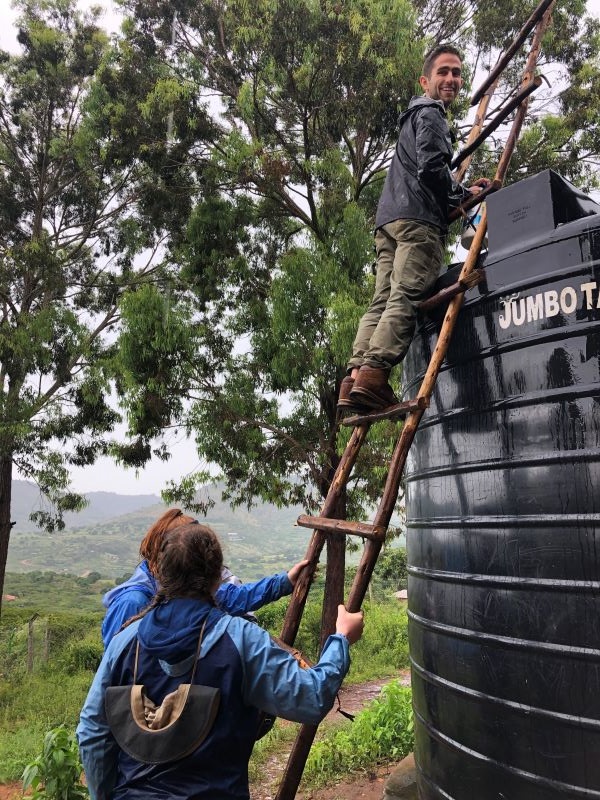
That’s me working on a water collection tank in Kenya
Post-Graduation: Building a Career
My senior year wrapped up with the COVID-19 pandemic, which—like for many of us—put a pause on travel and pushed the remainder of the semester online.
After graduating, I moved to NYC and started my career in environmental engineering. With international travel on hold, I decided to use my evenings to pursue a Master’s degree in Environmental Engineering. Having witnessed so many natural wonders, I couldn’t ignore the urgency of protecting them.
Now, I work on remedial design for major contaminated sites across the U.S., creating solutions that protect the environment for future generations.
As things started to open up, I found new ways to explore—whether it was discovering hidden gems around NYC or using PTO to visit new countries.
After a few years, I traded the NYC skyscrapers for a more laid-back beach vibe and moved to San Diego, where I continue to work in environmental engineering. I felt like it was time for a move and time to live somewhere new.
Sometimes, I contemplate whether my study abroad experience is the motivation for my interest in moving between cities, but it’s impossible to know for sure. Either way, I know it’s the reason I enjoy pushing myself out of my comfort zone.
-study-abroad-resized.jpg)
A photo of my time living in NYC working as an engineer
Travel and Blogging: Finding Balance in a Busy Life
Despite working full time now, my love for travel sparked during study abroad never faded.
About a year ago, I launched my travel blog, Imperfect Nostalgia, as a creative outlet and a way to document my experiences and inspire others to travel—no matter how full their calendars are.
The name Imperfect Nostalgia comes from a simple truth: the best travel memories are often the ones that don’t go as planned. It’s the mishaps, the wrong turns, and the missed trains that turn into the most cherished stories. Through my blog, I encourage others to see travel not as an escape, but as a way to grow—even if things don’t always go according to plan. And yes—even with a busy schedule.
Finding time to write while working full-time isn’t always easy, but I’ve learned that consistency is key. I chip away at posts bit by bit after work, and over time, those efforts add up to something meaningful. I’ve found that there’s no rush—it’s about enjoying the process. This was a hard thing for me to learn.
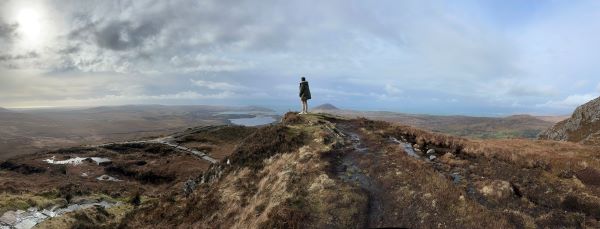
That’s me in Ireland visiting my brother studying abroad
Even if I only work on my blog a little at a time, I know that in a few years, I’ll have built a valuable collection of experiences that others can learn from. Writing about my travels helps me reflect on my experiences, and if my stories inspire others to explore the world, that’s a success in itself.
One of the most rewarding moments of my blogging journey was visiting my younger brother in Ireland while he was studying abroad. It was particularly meaningful because I had played a role in encouraging him to take that opportunity. Seeing how much he grew from the experience reminded me of the impact that studying abroad can have on someone’s life.
At the core of Imperfect Nostalgia is the belief that travel is for everyone. It doesn’t have to be expensive or perfectly planned. The key is to step outside your comfort zone, roll with the punches, and be open to the lessons along the way. And in many ways, this philosophy perfectly embodies what I believe to be the essence of studying abroad.
One thing I know for sure—I wouldn’t have this travel blog today if it wasn’t for my decision to study abroad with CEA all those years ago!
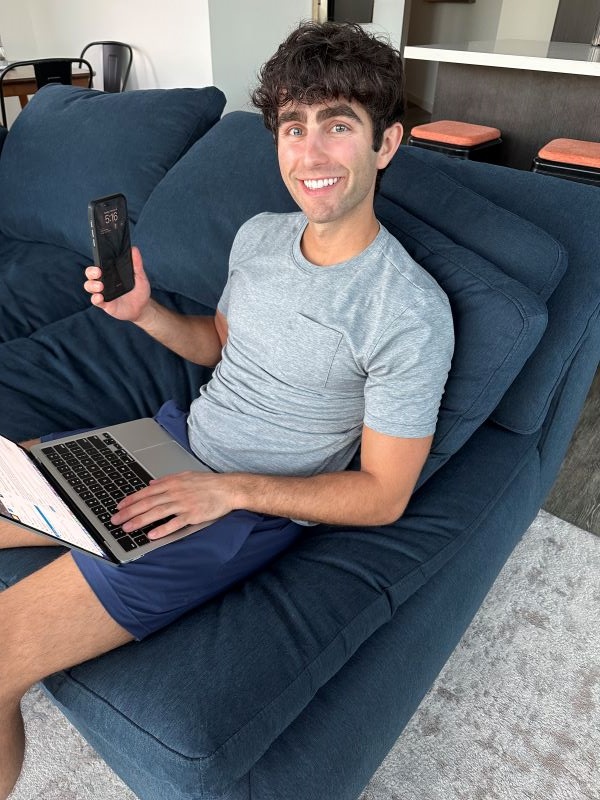
That’s me at home in San Diego working on my blog
Why Studying Abroad Still Matters
There’s a reason I placed an image of the Nomad statue at the beginning of this post. The sculpture resides in Antibes, France, gazing out over the Mediterranean Sea. I remember being completely captivated by it the first time I saw it.
Shaped like a seated human figure, the Nomad is made entirely of interlocking white steel letters from multiple alphabets. Its design reflects humanity’s shared communication and the universality of language—suggesting that, no matter where we come from, we’re all connected.
For many travelers (me included), the Nomad statue feels like a personal symbol—representing the emotional and intellectual journey that comes with living in a different country. It stands quietly, watching over the Mediterranean, reminding us that being open to the world makes us more human.
Looking back, my semester in Antibes was the catalyst for so much of what followed. It gave me the confidence to face new challenges, the spark for global impact, and the curiosity that continues to drive my passion for exploration.
Studying abroad with CEA lit the fire behind my schooling and career in environmental engineering, my leadership in Engineers Without Borders, my commitment to making study abroad accessible, and ultimately, my blog that now reaches readers from around the world.
If there’s one takeaway I hope to leave you with, it’s this: travel and study abroad are possible—for all majors. Whether you’re a student thinking about taking the leap, or a full-time professional trying to find time for a vacation, the world is out there waiting for you—and there is always a way to make it happen.
Curious where my travels have taken me since Antibes? Check out my blog, Imperfect Nostalgia, where I share itineraries, travel tips, and stories inspired by a love for travel and a healthy appreciation for the beautifully imperfect.

Thanks for reading!
This post was written by Jonathan DeMarco, a CEA CAPA Alumni who studied abroad at the University of Massachusetts Amherst, and studied abroad in Antibes, France.

